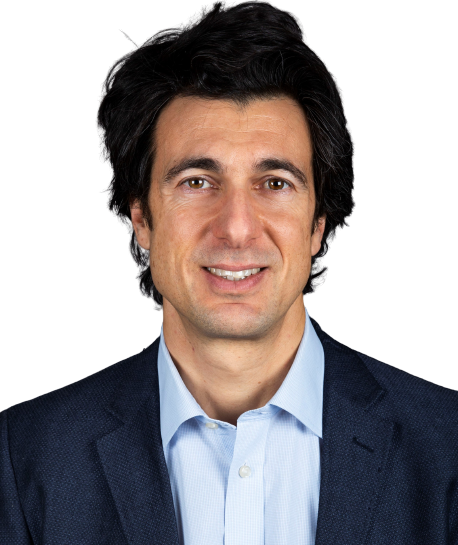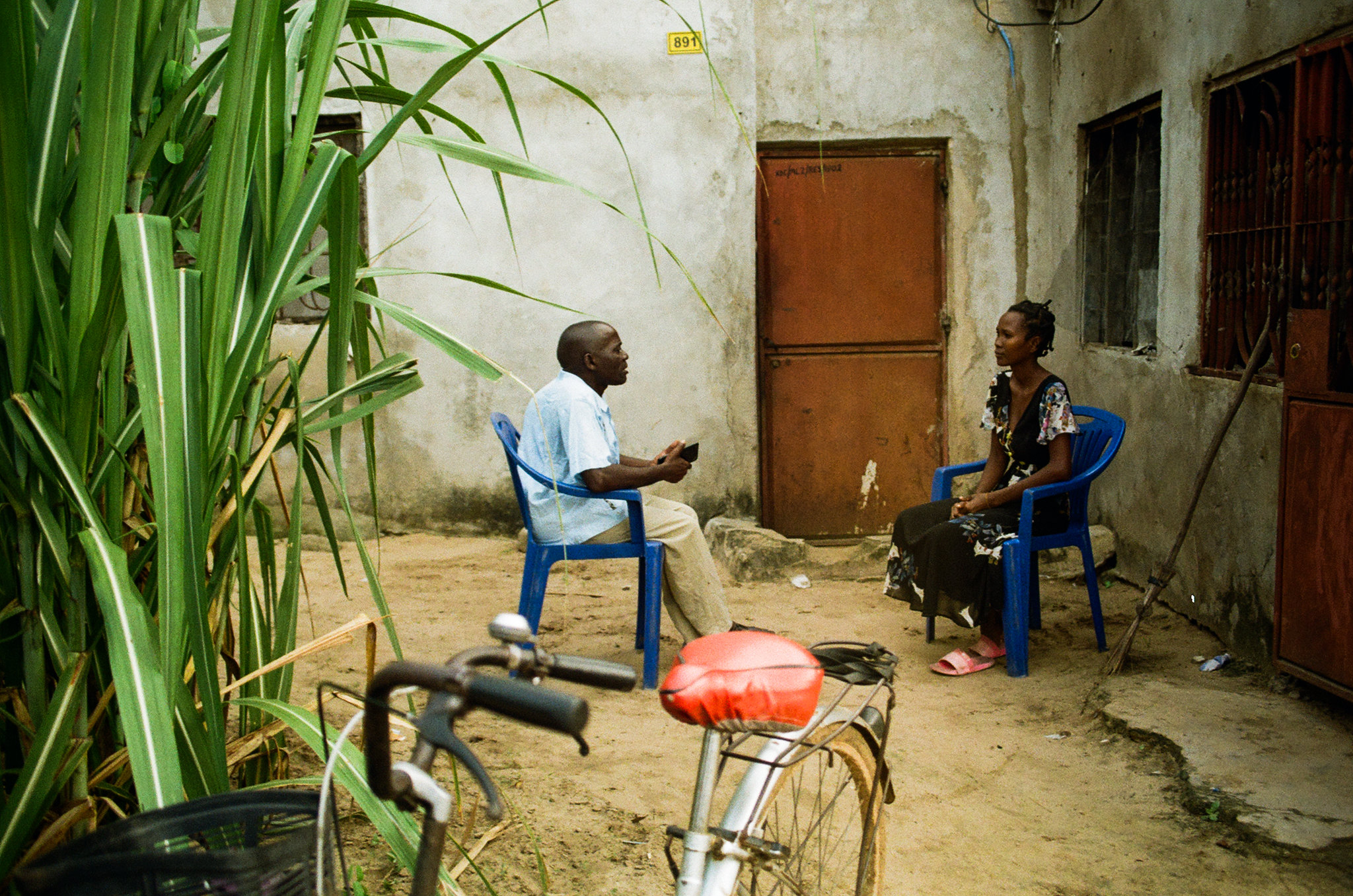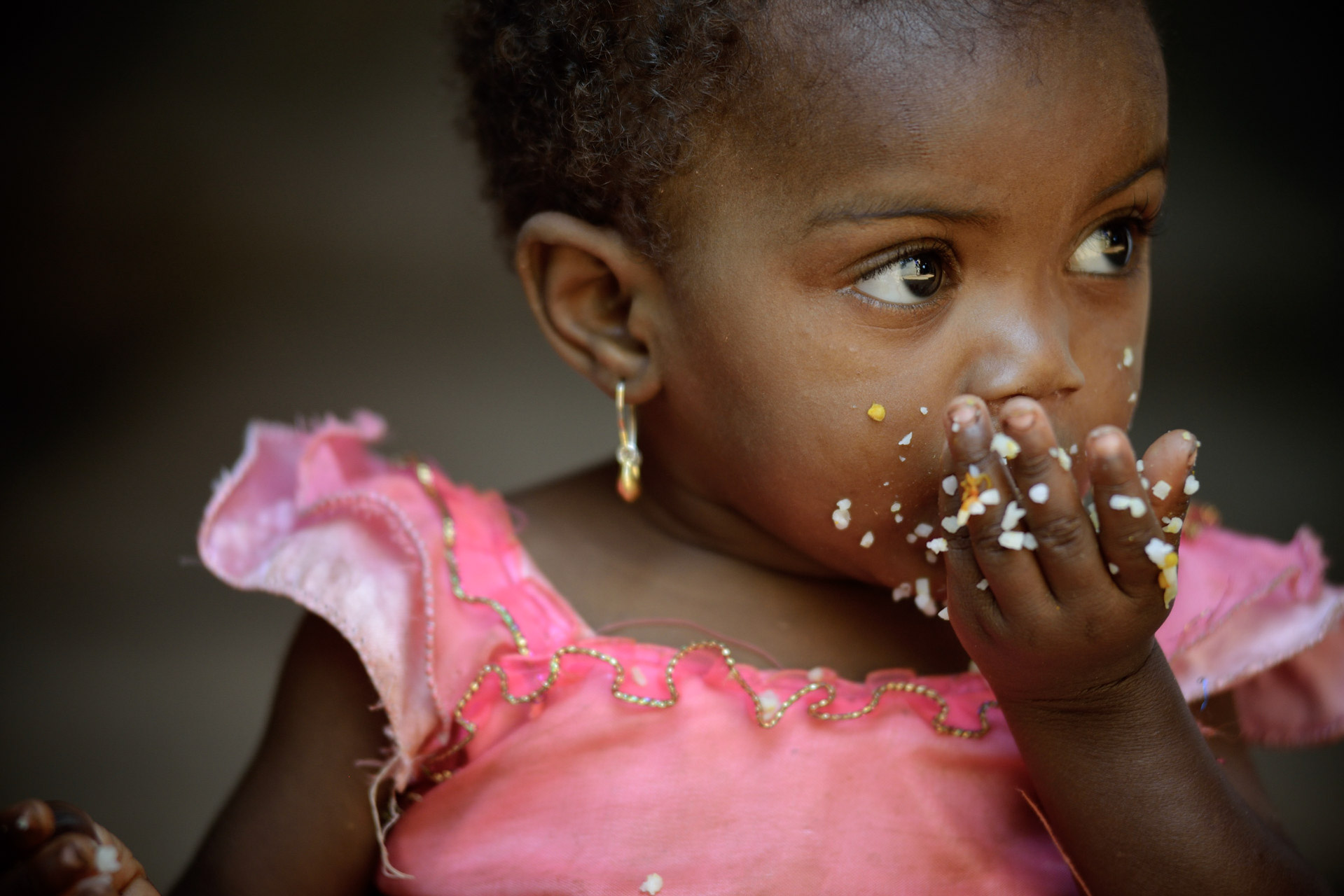As international aid – and in particular health funding – contracts at an alarming pace, the demand for affordable integrated interventions that are laser-focused on impact has never been greater.
In this shifting landscape, we are all forced to ask hard questions: Is our work in community health still the best investment to improve health and save lives? Through our programs, are we truly moving the needle on health and well-being in East Africa? And as an NGO, are we genuinely reaching the most vulnerable—or only supporting those already better off?
At D-tree, creating evidence and learning from our work is central to us and we have asked ourselves these difficult questions.
Amuko, a community health worker in Kibaha, Tanzania, sees Helena, a client, using a smartphone with Afya-Tek to guide him.
For over 20 years, D-tree has been leveraging innovative digital technologies to strengthen primary healthcare systems and improve health and well-being in some of the world’s most underserved communities. In close collaboration with national governments, we have enhanced community health programs to ensure equitable access to high-quality, essential health services—leaving no one behind. We have trained thousands of health workers and supervisors, equipped them with evidence-based digital decision-support tools, advanced national digital health platforms and shaped policies that drive sustainable health improvements.
A girl enjoys a meal after a malnutrition check-up from one of D-tree’s earlier programs in Zanzibar.
So, are D-tree’s programs laser-focused on impact? The evidence speaks for itself. A recent evaluation of Jamii ni Afya’s impact on child development revealed significant gains in children’s thinking, language and movement skills—laying a strong foundation for a healthy future for all children (Bhojani et. al, 2025, in submission). In Zanzibar, our work has helped reduce child stunting by 40%, and today, 93% of newborns receive urgent care on time. And we’re doing this efficiently—reaching nearly 2 million people at just USD 0.86 per person.
The impact expands beyond Zanzibar. In mainland Tanzania, our work directly improved the correct use of antibiotics with children with pneumonia symptoms who received the correct medication (Amoxicillin) almost doubling. Also, children with diarrhea receiving ORS and zinc jumped from 13 % to 33 %, leading to less severe cases and improved health outcomes.
Finally, we also have strong evidence that our impact is consistent across all social, demographic and economic groups—ensuring no one is left behind.
So, is community health still the best investment to improve health for all? Absolutely. The case for investment is laid out by Community Health Impact Coalition in a Lancet Commentary, and it is clear: community health returns of up to USD 10 for every USD 1 invested. And at D-tree, we are doubling down. Our vision is to expand the reach and impact of community health workers, ensuring that more lives are impacted.
But this is not the finish line. Community health is the first mile in the journey toward a healthier future. Prompt referrals by community health workers mean little if the facilities themselves are under-resourced and failing those in need. Similarly, health services provided in facilities often require timely follow-up at home to be fully effective. That’s why D-tree is now tackling the next frontier—strengthening the quality of care along the entire patient’s journey. And we’re doing it the only way that works: through powerful partnerships, national leadership and innovation.



